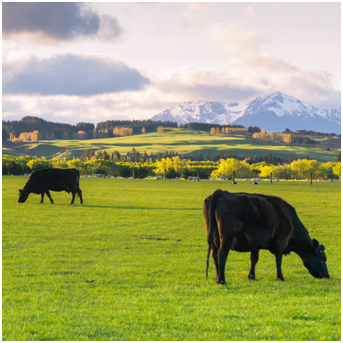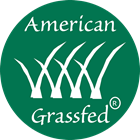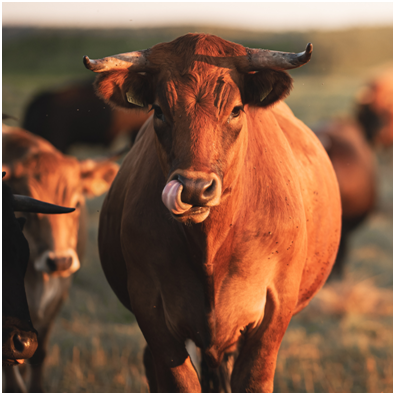
The rise of sustainability movements has invariably changed the way we see and consume our food. There’s a visible shift towards understanding the quality of what we eat, and most importantly, how it’s produced. Amidst various labels and certifications, there’s one such standard that stands for not just the rearing of livestock but the revival of a traditional, ecological practice – the American Grassfed Association (AGA) Certification.
AGA isn’t just another organization setting standards. It’s a beacon for what discerning consumers, agricultural professionals, and even the general public yearn for – transparency, sustainability, and an assurance of quality from farm to table. Through this comprehensive guide, we step into the lush pastures of AGA’s principles and the profound impact they have on sustainable agriculture and our well-being.
The Roots of AGA Grassfed Standards
At the core of AGA’s philosophy lies the belief that grass-fed meat is healthier, more humane, and that it forms a pivotal part of sustainable agriculture. This credence is not mere rhetoric; it’s supported by rigorous research and industry expertise.
The Four Pillars of AGA Certification
AGA’s definitive standard is framed around four core pillars, outlining the key tenets for raising livestock in a manner that aligns with nature’s design.
- 100% Grass Diet: Animals are reared from weaning to harvest solely on grass and forage. This not only maintains the animals’ health through a natural diet but also benefits the ecosystem by reducing reliance on grain and associated environmental strain.
- Raised on Pasture: Livestock thrives in open pastures, where they can graze freely and express their natural behaviors. This not only improves the welfare of animals but also the land.
- No Antibiotics or Hormones: AGA doesn’t allow the use of growth hormones or antibiotics for aiding growth or prevention of diseases. This restriction aims to curb the emergence of resistant strains of bacteria and supports healthier animals.
- Family Farm Origin: A lineage can be drawn from each AGA-certified animal to a birth and upbringing on American family farms, emphasizing traceability and local economic support.
The Impact on Livestock and the Environment
The standards aren’t just about ‘how’ animals are raised but the broader outcomes that reverberate across ecosystems and the quality of produce.
Holistic Ranching: More Than Just Grass
Holistic ranching under AGA care ensures the entire web of life within the ranch is considered. This approach factors in water and soil health, predator-friendly practices, and reduced reliance on synthetic inputs, creating a balanced and thriving ecosystem.
Healthier Eats with a Smaller Carbon Footprint
The benefits extend to the plate, offering meats that are richer in omega-3 fatty acids, vitamins, and lower in unhealthy fats. Additionally, the carbon footprint of grass-fed operations is considerably lower, with a reduced need for intensive farm chemicals and shorter transportation distances.
AGA in Practice: On the Field and Beyond
AGA’s certification doesn’t end with a set of standards on paper. It’s a living certification, with AGA-Certified farmers and ranchers proving its viability on a daily basis. It’s a commitment seen in every morsel of AGA-Certified meat and each interaction with the land.
Farmers Leading by Example
AGA farmers are torchbearers, showcasing that sustainable and ethical meat production is not just possible but economically viable. Their dedication to the standards often results in superior meat quality and flavor, dispelling the myth that sustainable practices come at the cost of taste or profitability.
The Consumer Connection
For consumers, choosing AGA-Certified products isn’t just a purchase; it’s a vote for a more sustainable future. The label assures that what you’re consuming is not just high-quality but a product of ethical and eco-conscious principles.
Navigating the Certification
For farmers and producers interested in AGA certification, the path is comprehensive yet rewarding. It involves a detailed understanding and adherence to the organization’s set standards, often leading to the transformation of farming practices and improved business opportunities.
The Application Process
The first step toward AGA certification requires ensuring that the farming practices align with AGA’s requisites. This involves a detailed application process that covers the farm’s history, feed sources, and animal care protocols.
The Inspection Phase
Upon application approval, an on-site inspection by an AGA-approved auditor determines compliance with the standards. This audit is repeated at least once every 15 months, ensuring consistency and continuous improvement.
The AGA Certification Seal: A Mark of Trust
AGA’s distinctive seal on a product denotes a higher standard – one that signifies not just the quality of the product but also the integrity of the process behind its creation. This symbol carries weight with consumers, retailers, and the industry at large.
The Value Proposition
For producers, the AGA seal opens doors to markets that value sustainability and quality. Retailers recognize the seal as a sign of commitment to ethical and sustainable practices, often leading to premium product placement and prices.
Consumer Trust
Consumers view the AGA seal as a trusted marker for grass-fed products they can feel good about. It communicates that the purchase isn’t just about satisfying hunger but aligning with longstanding principles of ethics and sustainable eating.
The Future of AGA and the Grassfed Movement
The future of AGA and the grassfed movement it represents is bright, with an increasing consumer awareness and demand for sustainable, high-quality foods. AGA stands at the vanguard, ready to guide the transition to a more eco-conscious and health-focused food industry.
Scaling Up
AGA aims to expand its reach, making AGA-certified products more accessible nationwide. This involves onboarding more farmers, creating infrastructure support, and increasing consumer education efforts.
Continuous Innovation
The organization is committed to staying abreast of technological advancements and scientific knowledge to continually refine its standards. This adaptability ensures that AGA’s guidelines remain at the forefront of the grass fed industry.
Takeaway
The AGA certification isn’t just about meeting standards; it’s a testament to the commitment toward creating a food system that’s not just better but also resilient. From the grassy expanses where cattle graze to the tables where families gather, AGA has redefined what it means to produce and consume meat. It’s a call to action, a measure of accountability, and a promise of a sustainable future – one well worth exploring and supporting.

